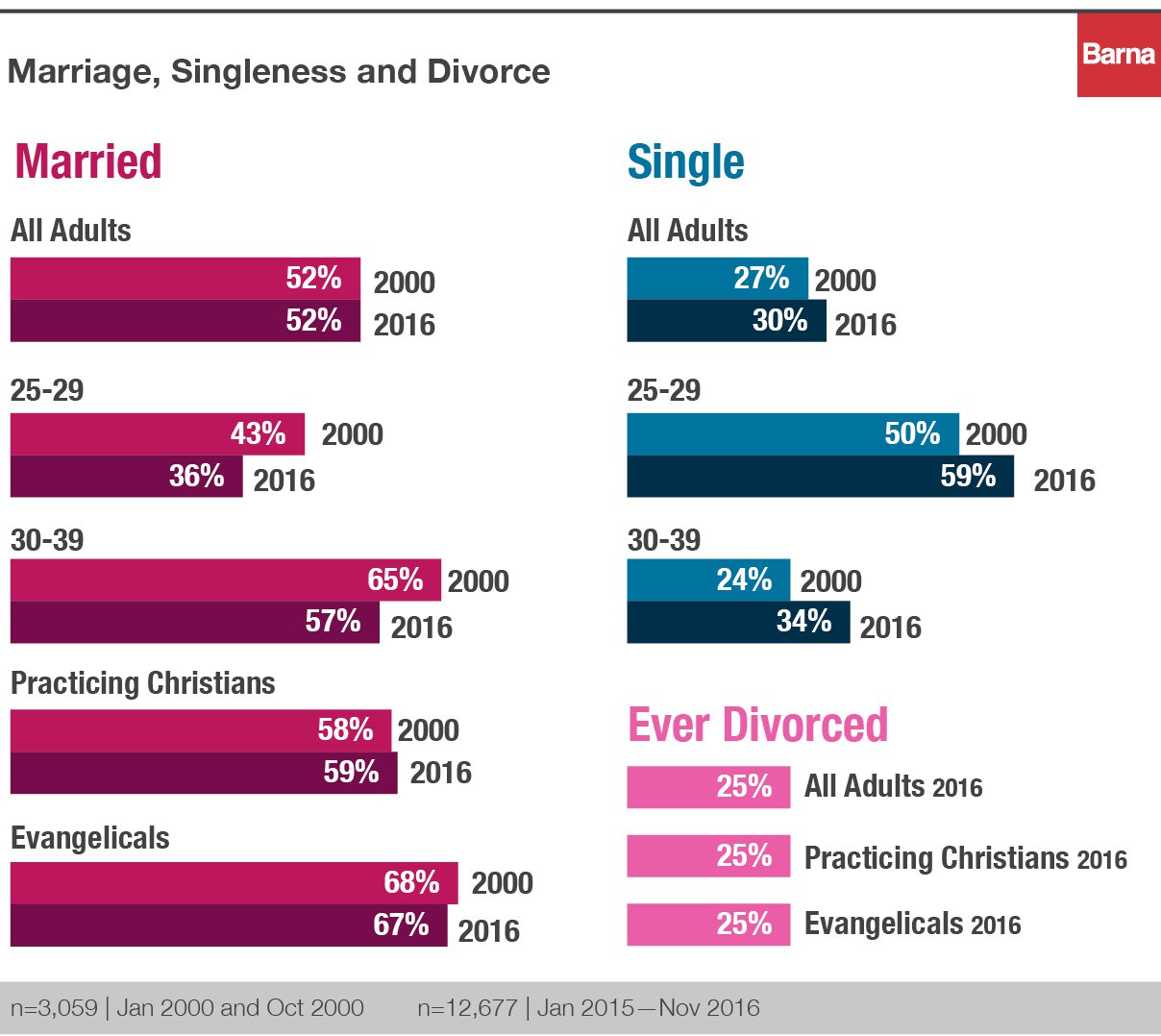Churches may want to take a hard look at what they’re offering young, single adults — and then boost it.
“Many churches are built around a family model,” Roxanne Stone, editor and chief of the Barna Group, said in remarks published with a survey about romance and relationships.
“They are most comfortable ministering to families and have developed an infrastructure to support couples and children,” she said.
But research shows that a lot more energy needs to be expended on young, single adults.
While the percentage of people who are married or divorced as remained steady since 2000, singles have increased in that time by 27 percent to 30 percent of adults, Barna said in a study titled “The Trends Redefining Romance Today.”
“This uptick is the big story here, and it only gets more pronounced when looking closely at the trends within the different age groups,” Barna said in a summary of its research published online.
More eye-openers include some of the attitudes and patterns around dating and cohabitation uncovered in the data.
Some of it is not surprising.
“But the state of romance — the reasons and mechanics for how we date, the when and why of getting married, the places we find love — has changed dramatically in a very short period of time,” Stone said in remarks included with the study.
Marriage and divorce rates have remained somewhat steady since 2000. The percentage of adults who are married has remained at 52 percent. Those currently divorced hovers around 10 percent.
“Because of the reality of re-marriage, the currently divorced rate does not take into account past divorce, which, when accounted for, brings the proportion of American adults who have ever been divorced to one-quarter,” which is also steady since 2000, Barna said.
 The trends are similar in some ways among people of faith — though there are some differences.
The trends are similar in some ways among people of faith — though there are some differences.
“The difference — and it is a significant one — is that practicing Christians and evangelicals are much more likely to be married than the average American,” Barna reported.
Nearly 59 percent of practicing Christians are married – a ratio that has remained steady since 2000.
“This is even more pronounced among evangelicals, 67 percent of whom are married, 15 percent higher than the general population,” researchers found.
But there is at least one significant statistic that both practicing Christians and evangelicals share with other Americans, Barna found.
“In fact, both groups equal the rate of divorce (both historically and currently) of the general adult population.”
The study also examined the issue of cohabitation.
It found that 65 percent of U.S. adults either strongly or somewhat agree that it’s a good idea for a couple to live together before getting married. That’s compared to 35 percent who either strongly or somewhat disagree.
Most – 84 percent — of those who agree say it’s wise to cohabitate in order to test a couple’s compatibility.
“Though the debate has raged over whether cohabitation reduces or increases the pressure of marriage, it appears that among those who have actually done it, there was no major effect either way,” Barna said.
Most of those who disagree are members of religious groups.
“The expectation of abstinence prior to marriage is a major driver here: 28 percent chose ‘I don’t believe people should have sex before getting married’ as their biggest reason for believing cohabitation is a bad idea.”
The report also looked into how people meet each other. It found that a lot people are cool toward internet dating.
Nearly three in 10 Americans said they have tried online dating up to two times, but only 5 percent said they use it regularly.
Barna found that a lot of people seek love at work.
“The workplace is rife with romantic (or simply sexual) chemistry,” Barna said.
A quarter of all adults said they believe a colleague or boss is attracted to them. Another 16 percent said that coworker or supervisor expressed attraction to them, while 18 percent said they were asked on a date by the other person.
Churches and their leaders should pay attention to these trends, including the fact that people are waiting longer to get married.
“A full 30 percent of Millennials aren’t so sure about marriage at all — they express doubt as to whether or not they even believe in the conventional form of marriage,” Stone said.
That can be a problem for congregations whose focus on married couples and young families. she said.
If “young adults are waiting longer to get married, the church can’t afford to simply hope they’ll come back once they get married and settle down,” she said.
“People’s twenties are a critical part of their formation — people shape identity, habits and beliefs during those years. They are important years to be part of a church community.”


